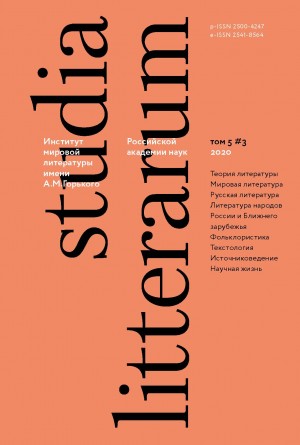Philology vs Philosophy? In Search of the Exit from the Interpretative Dead Еnd
Journal title: Studia Litterarum
Authors: Vadim V. Polonsky
Subject(s): Literature, Languages and Literature

Journal title: Studia Litterarum
Authors: Vadim V. Polonsky
Subject(s): Literature, Languages and Literature
Journal title: Studia Litterarum
Authors: Andrey F. Kofman
Subject(s): Literature, Languages and Literature
Journal title: Studia Litterarum
Authors: Vladimir D. Sedelnik
Subject(s): Literature, Languages and Literature
Journal title: Studia Litterarum
Authors: Irina L. Popova
Subject(s): Literature, Languages and Literature
Journal title: Studia Litterarum
Authors: Alexander B. Kudelin
Subject(s): Literature, Languages and Literature
Journal title: Studia Litterarum
Authors: Alexander E. Makhov
Subject(s): Literature, Languages and Literature
Journal title: Studia Litterarum
Authors: Vera V. Shervashidze
Subject(s): Literature, Languages and Literature
Journal title: Studia Litterarum
Authors: Veronika D. Altashina
Subject(s): Literature, Languages and Literature
Journal title: Studia Litterarum
Authors: Anastasia V. Golubtsova
Subject(s): Literature, Languages and Literature
Journal title: Studia Litterarum
Authors: Alfred A. Matsevitch
Subject(s): Literature, Languages and Literature
Journal title: Studia Litterarum
Authors: Andrey V. Korovin
Subject(s): Literature, Languages and Literature
Journal title: Studia Litterarum
Authors: Sakowicz I
Subject(s): Literature, Languages and Literature
Journal title: Studia Litterarum
Authors: Yuri Y. Barabash
Subject(s): Literature, Languages and Literature
Journal title: Studia Litterarum
Authors: Anatoly S. Demin
Subject(s): Literature, Languages and Literature
Journal title: Studia Litterarum
Authors: Natalia D. Bludilina
Subject(s): Literature, Languages and Literature